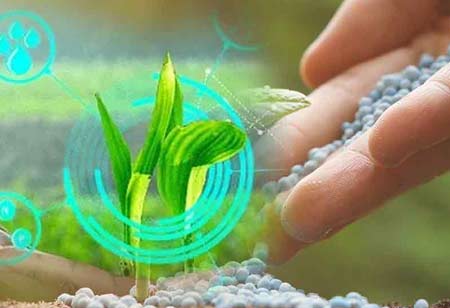Thank you for Subscribing to Agri Business Review Weekly Brief
What Is The Future Of Agritech If LEDs Are Used In Indoor Farming?
Since time immemorial, sunlight or natural light has been one of the greatest drivers in producing food, nurturing and originating plant growth.

By
Agri Business Review | Thursday, October 06, 2022
Stay ahead of the industry with exclusive feature stories on the top companies, expert insights and the latest news delivered straight to your inbox. Subscribe today.
Farmers are adopting LED Lighting in Indoor and Vertical Farming to enhance the production of good yields as the demand to enhance the crop output is soaring.
FREMONT, CA: Since time immemorial, sunlight or natural light has been one of the greatest drivers in producing food, nurturing and originating plant growth.
Still, due to the sporadic and erratic nature of weather conditions worldwide and the pressure of increasing agricultural yields to provide for the humungous requirements of billions of people, farmers have been pressured to increase productivity at limited costs for quite some time.
This is one of the main factors of increasing food inadequacy and lack of people in agriculture plaguing the world now.
To solve this ever-rising issue, LED Lighting in Indoor and Vertical Farming was a blessing for the farmers as an innovation.
As traditional farming methods rely heavily on natural sunlight to help plants through photosynthesis, another major challenge that farmers face is when a differing amount of sunlight is received by the plants throughout the year, as per the weather conditions of that place.
Because of this, various farmers are shifting their practices to LED Lighting in Indoor and Vertical Farming.
As LEDs accompany eco-friendly features, farmers are rapidly picking LED Lighting in Indoor and Vertical Farming as a new method of producing good yields as the demand to improve the crop output is soaring.
Besides its low pricing and intensity control features that allow a certain control of lighting at times for proper plant growth, LED Lighting in Indoor and Vertical Farming has shown its merits in enhancing the quality of the crops produced in a controlled manner.
Before divulging further advantages and the current trend of LED Lighting in Indoor and Vertical Farming, let’s first get a preview of the design and functioning of a LED and how it helps control plant growth and its quality.
Examining Light Emitting Diodes (LEDs)
Light-emitting diodes (LED) is a regular diode that functions when an electric current is passed between semiconductors due to which light gets emitted.
LEDs usually operate on the principle of electroluminescence, a phenomenon where the electronic excitation of material causes the emission of photons.
The material normally employed in LEDs includes gallium arsenide. Still, many variations on this basic compound are also used, like aluminum gallium arsenide or aluminum gallium indium phosphide.
Reasons for Opting for LEDs Instead of Others
Compared with other forms of electrical illumination, Indoor Agricultural practices entail LEDs because of their low energy consumption. In addition, they give off little heat and are quite easy to control, which further helps optimize plant growth.
Still, in cases of other types of electrical illumination, like fluorescent lamps, which include mercury to make the lamp work properly and efficiently, it serves as a disadvantage as mercury is a heavy metal that is quite dangerous to the environment.
Going another lighting source like incandescent lamps, they are considered the least energy-efficient electric lighting due to their inefficiency and brief life spans. They are also more expensive to work on than LED and fluorescent lights.
How does LED Lighting in Indoor & Vertical Farming work?
It’s general knowledge that plants need light for photosynthesis. Still, the point that most people miss out on is that plants react differently to various wavelengths of light because of their distinct photoreceptors.
The primary types of wavelengths that are necessary for crop production range from Ultraviolet (UV), Photosynthetically Active Radiation (PAR), and Near Infrared (NIR).
Though PAR portrays that part of the radiation spectrum that enables plants to carry out photosynthesis, UV and NIR have different impacts on some crop development processes.
As per a recent study, researchers have concluded that chemicals controlling plant growth respond mostly to red and blue light waves in different manners.
And this has taken us to our current discussion on how LED Lighting in Indoor & Vertical Farming has enabled us the benefit of manipulating lighting to enhance crop yield and quality.
Perks of LED Lighting in Indoor & Vertical Farming
Citing some of the key advantages of using LED Lighting in Indoor and Vertical Farming are as follows,
• Faster Harvest Cycles
• Energy Efficiency and Environmental Safety
• Control of Colour Temperature
• Saving Money and the Environment
• Cooler Operating Temperature





